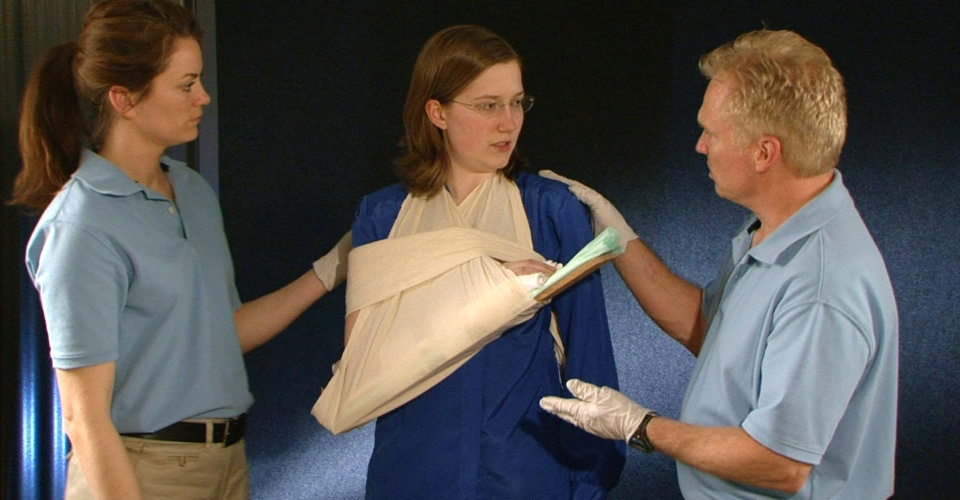A splint is a device used to externally immobilize a painful, swollen, or deformed limb in order to decrease pain and prevent further injury. In most cases, splinting an injured body part is best accomplished by EMS. In cases where EMS response is significantly delayed or not available, it is appropriate for you to splint an injured limb.
Splints can be improvised with commonly available items. An effective splint is made up of three things:
- Something rigid to provide external stability — things such as another part of the body, compressed pillow, cardboard, folded magazine, or wood slat.
- Something soft to fill and support the contoured gaps around joints and body ridges — things such as pads, towels, coats, pillows, or blankets.
- Something to bind the limb, rigid material, and padding together — things such as roller bandages, folded cloth bandages, tape, belts, or rope.
Splint the limb in the position found. In addition to immobilizing the injury site, immobilize the joints above and below the injury. After splinting, check frequently for discoloration, coolness, or numbness past the splint. If necessary, loosen the splint to improve blood flow.
Once a splint is in place, observe the limb on the far side of the splint for signs of poor blood circulation. If the limb is cool or numb, loosen the binding on the splint to improve blood flow.
Commercial splints are available to make splinting more convenient. These include cardboard splints, padded board splints, and the SAM Splint, a padded malleable aluminum material that is easy to store and can be molded and shaped to create rigid splinting material.
Want to learn more about splintng and other easy-to-learn first aid techniques? Take an ASHI or MEDIC First Aid class!








.png?width=600&name=HSI-CTA-EmergencyCareTraining%20(1).png)











Comments